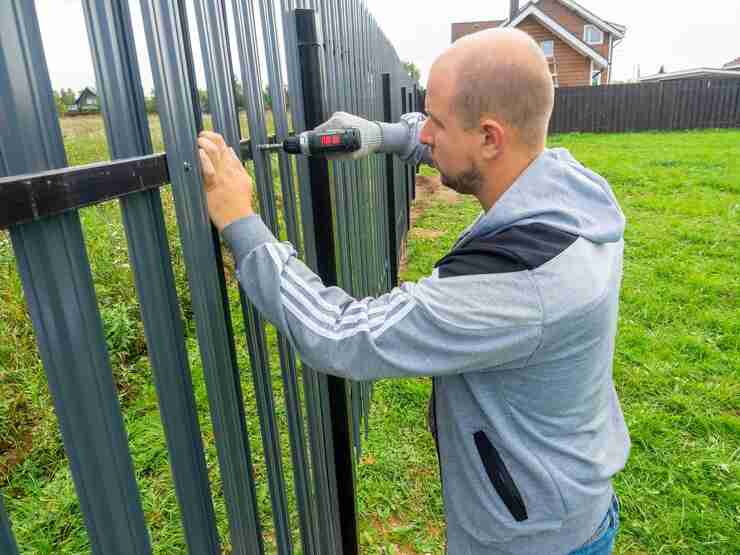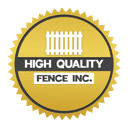DIY Tips and Professional Advice for Fence Construction

Constructing a sturdy and attractive fence around your property is not just about functionality but also enhancing the aesthetics of your outdoor space. Whether you’re looking to define boundaries, increase privacy, or simply add a decorative element, embarking on a DIY fence project can be both rewarding and challenging. From choosing the right materials that suit your climate and preferences to mastering the techniques that ensure durability, there are numerous considerations to keep in mind.
In this blog, we delve into a blend of DIY tips and expert advice that will guide you through the process of fence construction. Whether you’re a novice or have some experience, these insights aim to empower you to create a fence that not only meets your practical needs but also complements your home’s style effortlessly.
Understanding Your Property’s Needs: Assessing Security vs. Aesthetics
Before diving into fence construction, it’s crucial to evaluate what your property requires. Are you primarily concerned with enhancing security, defining boundaries, or adding a decorative touch to your landscape? Understanding these needs will guide your decisions throughout the project. For instance, if security is paramount, you might opt for a taller, solid fence design with minimal gaps.
Conversely, if aesthetics are a priority, you could explore more ornamental styles that compliment your home’s architecture and garden design. Balancing these factors ensures your fence not only meets functional requirements but also enhances the overall appeal of your property.
Choosing the Right Fence Materials: Wood, Vinyl, Metal, or Composite?
The choice of materials significantly impacts the durability, maintenance needs, and visual appeal of your fence. Wood offers a classic look and can be stained or painted to match your preferences, but it requires regular upkeep to prevent rot and weathering. Vinyl, on the other hand, is low-maintenance and comes in various colors and styles, making it ideal for busy homeowners. Metal fences, such as wrought iron or aluminum, provide strength and security while requiring minimal maintenance, though they can be more costly upfront.
Composite materials offer a blend of wood fibers and recycled plastics, combining the natural look of wood with the durability of plastic. Understanding the pros and cons of each material helps you make an informed decision based on your budget, climate, and desired aesthetics.
Planning Your Fence Layout: Mapping Boundaries and Functional Areas
The layout of your fence is more than just a line around your property. It should strategically define boundaries while accommodating functional needs like access points and garden spaces. Begin by surveying your property lines to ensure compliance with local regulations and neighborly considerations.
Mapping out where gates and pathways will be placed ensures convenient access without compromising security or privacy. Consider the natural flow of your landscape and how the fence will integrate with existing features like trees, shrubs, and slopes. This thoughtful planning phase sets the foundation for a well-designed fence that enhances both practicality and visual harmony in your outdoor space.
DIY Tools and Equipment Essentials for Fence Building Success
When embarking on a DIY fence building project, having the right tools and equipment is crucial for achieving professional results. Here’s a guide to essential tools that will streamline your construction process and ensure a sturdy, well-built fence:
- Post Hole Digger: A reliable post hole digger is indispensable for excavating holes to the correct depth, ensuring stability and alignment of fence posts.
- Level: Use a quality level to ensure that your fence posts and panels are installed straight and plumb, preventing leaning or unevenness over time.
- Measuring Tape: Accurate measurements are key to a precise fence layout and panel placement, minimizing errors and ensuring a uniform appearance.
- Circular Saw: A versatile tool for cutting fence panels and posts to size, facilitating smooth and efficient construction.
- Drill with Screwdriver Bits: Essential for fastening screws or nails securely, ensuring panels are firmly attached to posts without risk of loosening.
Equipped with these tools, you’ll be well-prepared to tackle your fence building project with confidence, achieving professional-quality results that enhance both the functionality and aesthetic appeal of your outdoor space.
Building a Solid Foundation: Digging Post Holes and Setting Posts
The foundation of your fence is critical to its stability and longevity. Begin by marking the locations for your posts according to your planned layout, ensuring they are evenly spaced and aligned. Digging post holes to the appropriate depth is essential—typically about one-third the height of the fence post, plus a few inches for gravel drainage at the bottom. Use a post hole digger or auger for efficiency, and check the depth and alignment with a level as you go.
Once the holes are dug, fill the bottom with a few inches of gravel for drainage, then set your posts securely using concrete or a concrete mix for stability. Ensure each post is level and plumb before allowing the concrete to set fully. A solid foundation not only supports the structure but also prevents issues like leaning or shifting over time, ensuring your fence stands strong for years to come.
Techniques for Seamless Fence Panel Installation
Achieving precise panel placement begins with careful measurement and marking, followed by secure assembly using quality fasteners for durability and alignment. Adjust for terrain and enhance with finishing touches.
- Accurate Measurement and Marking: Precision in measuring and marking ensures panels are evenly spaced, contributing to a cohesive appearance.
- Proper Panel Pre-Assembly: Following manufacturer instructions ensures panels are structurally sound and aesthetically pleasing.
- Secure Fastening Techniques: Galvanized or stainless steel screws provide durability and prevent rust, ensuring panels remain securely attached over time.
- Alignment and Leveling: Checking for level and plumb alignment ensures a straight and professional-looking installation.
- Customization for Landscaping: Adjusting panel placement accommodates slopes or landscape features, maintaining a seamless appearance across varying terrain.
Adding Gateways: Design Considerations and Installation Tips
Gates provide functional access points within your fence and serve as focal points in its design. Consider the size and type of gate(s) you need based on intended use—whether for pedestrians, vehicles, or garden equipment. Match the gate style to your fence for consistency, choosing materials and hardware that complement the overall design. Ensure gates are properly reinforced with sturdy posts and hinges to support their weight and frequent use.
Consider adding features like latches, locks, or decorative elements that enhance both security and visual appeal. Proper installation includes ensuring gates swing freely without dragging or sagging, with adjustments for smooth operation over time. Whether simple or elaborate, gates should blend seamlessly into your fence design while providing convenient and secure access to your property.
Enhancing Durability: Weatherproofing and Maintenance Strategies
Weather elements can take a toll on your fence over time, making weatherproofing essential for durability. Treat wood fences with a protective stain or paint to prevent moisture absorption and UV damage, enhancing both appearance and lifespan. Vinyl and metal fences typically require less maintenance but benefit from occasional cleaning to remove dirt and mildew buildup. Inspect your fence regularly for signs of wear or damage, addressing issues promptly to prevent further deterioration.
Consider applying a sealant or protective coating as needed, particularly in harsh climates or high-traffic areas. By implementing proactive maintenance strategies, you can extend the life of your fence and preserve its functionality and visual appeal for years to come.
Integrating Decorative Elements: Trellises, Arbors, and Lattice Work
Adding decorative elements to your fence can elevate its aesthetic appeal and integrate it more seamlessly into your landscape design. Trellises and arbors provide vertical interest and support for climbing plants, creating a lush, green backdrop or focal point in your yard. Lattice work offers privacy while allowing airflow and natural light, enhancing both functionality and visual appeal. Choose materials and designs that complement your fence style and home architecture, ensuring cohesive integration with your outdoor space.
Consider seasonal changes and plant growth when planning decorative elements, ensuring they enhance rather than overpower your fence’s overall look. Whether for practical purposes or aesthetic enhancement, thoughtful integration of decorative elements adds charm and personality to your fence, making it a standout feature in your outdoor environment.
DIY vs. Professional Installation: Cost, Time, and Skill Trade-offs
Deciding between DIY and professional installation involves weighing several factors, including cost, time, and required skill level. DIY projects can save money on labor costs but require significant time and effort, particularly for larger or more complex designs. Consider your own skills and experience with similar projects, as well as the availability of necessary tools and equipment.
Professional installation offers expertise, efficiency, and often a warranty, ensuring a professionally finished fence with minimal hassle. Obtain multiple quotes from reputable contractors to compare costs and services before making a decision. Ultimately, whether you choose DIY or professional installation depends on your budget, time constraints, and desired level of involvement in the project.
Constructing a fence that balances functionality and aesthetic appeal requires careful planning, proper materials, and skilled execution. Whether you embark on a DIY project or enlist professional help, these insights aim to empower you to create a fence that enhances your property’s value and curb appeal while meeting your practical needs.
Ready to transform your outdoor space? Contact High Quality Fence at 209-815-9015 and info@highqualityfence.com or visit us at 1112 N. Main Street #171, Manteca, CA 95336. Our expert team can help you design and install a custom fence that complements your home and lifestyle. Get started today and enjoy a more secure and beautiful outdoor environment!


